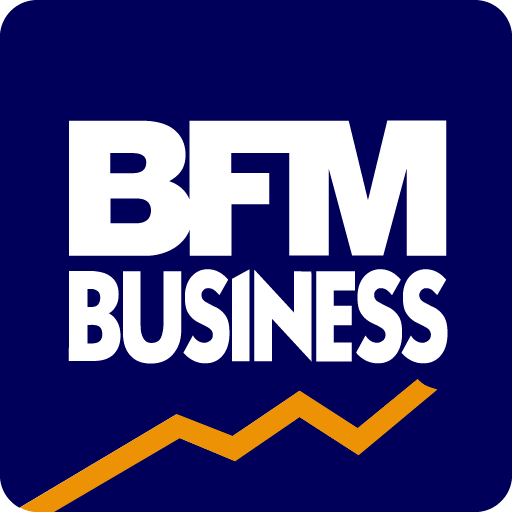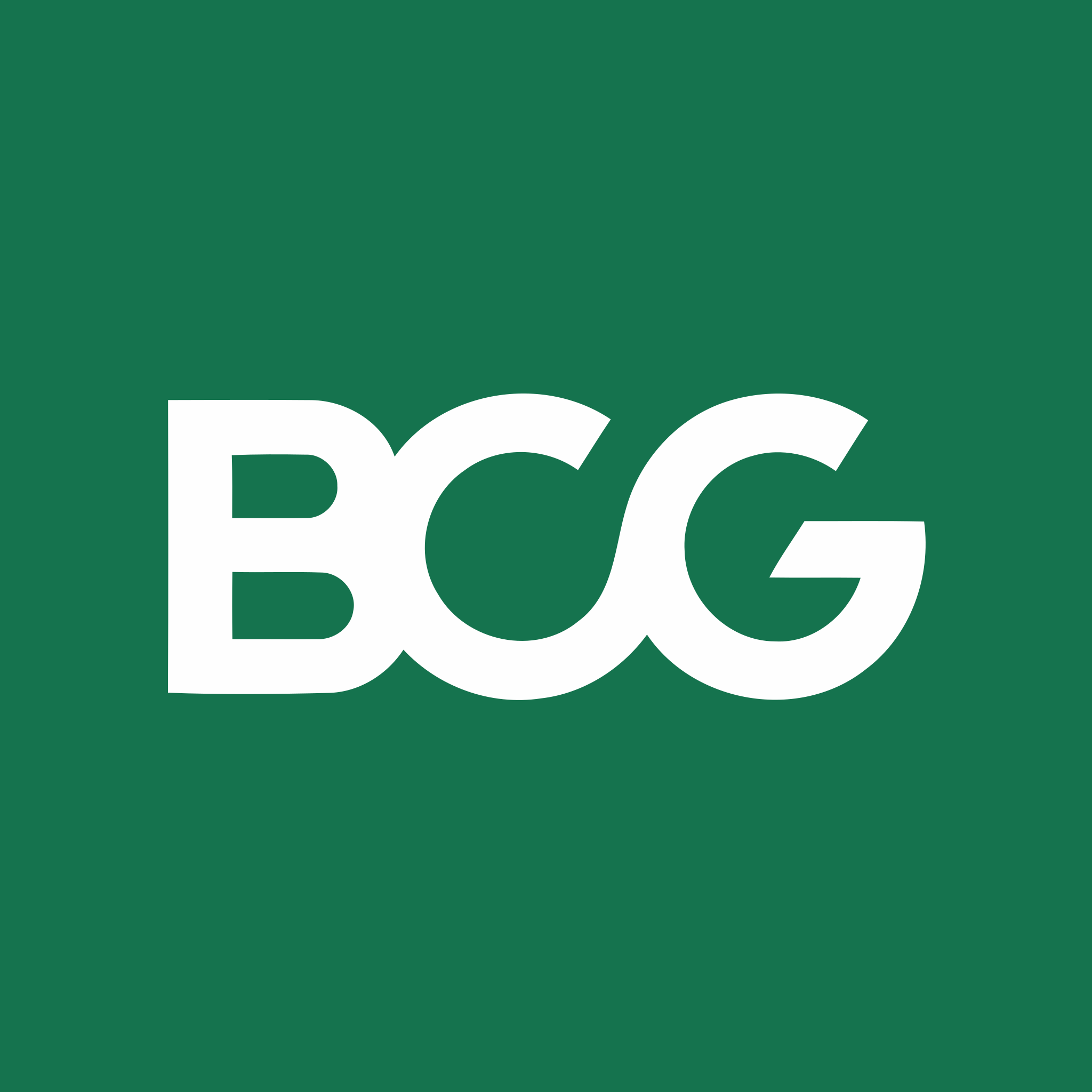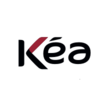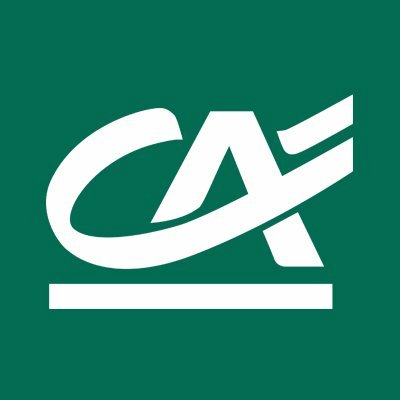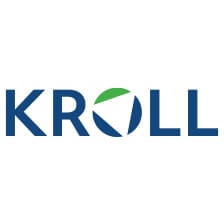Summary of our market study
The global market for recycling services, including organic waste management, is growing at a steady 5%. Organic waste represents around 46% of total waste volume.
The global food waste management market is worth over $55 billion.
The total amount of waste produced per capita each year is 13.8 tonnes. Biological waste management therefore represents 14% of all waste treatment.
France produces 354 kg of household waste per inhabitant per year, a third of which is organic waste.
Restaurants and grocery stores, the main generators of kitchen waste, are obliged to sort their bio-waste. The agriculture and gardening sector produces both organic waste and compost.
The sector faces problems such as stagnating volumes of recycled organic waste and a shortage of quality outlets for recovered organic materials.
Methanization units show modest profitability which, without public subsidies, may not be financially viable for many operators.
The Ecological Transition Act of 2025, which makes source separation of food waste mandatory.
Market players Collection and management service providers
- Cocycler and Love Your Waste: These companies specialize in the crucial first stage of the process, namely the collection of organic waste.
Innovative on-site solutions
- AxiBio and Upcycle: These companies provide modules that enable individuals and organizations to process their organic waste where it is produced. Pioneers in methanization
- Helioprod: This company is actively involved in the development and operation of methanization units.
Compost producers
- Val'Id, Moulinot and Ecosec: These companies have developed their expertise in compost production.
Waste recovery specialists
- BioMimetic and NextAlim: These companies use insects to process organic waste.
Alternative recovery technologies
- BioPhenol and Gecco: BioPhenol produces bio-based chemicals, while Gecco focuses on the recovery of cooking oils.
Advocates of home composting
- Ekovore promotes self-sufficiency in organic waste disposal through its home composting solutions.
to understand this market
Detailed content of our market study
 Inforamtion
Inforamtion
- Number of pages : 35 pages
- Format : Digital and PDF versions
- Last update :
 Summary and extracts
Summary and extracts
1 Market overview
1.1 Definition
Organic waste is a category of waste originating solely from living organisms, be they animals or plants. This detritus decomposes thanks to micro-organisms and bacteria, and can thus be recycled to produce various sources of energy or fertilizer. There are several ways of recycling this waste, the main ones being composting (aerobic digestion) and methanization (anaerobic digestion). The global waste treatment market is constantly expanding. The growth of the world's economies has mechanically led to an increase in the amount of waste produced. Treatment of this waste is therefore increasingly important.
The France is the 11th country in the European Union to produce the most waste per inhabitantwith an average of 539 kg/capita/year by 2022. Organic waste can be broken down into three main categories, which account for the vast majority of waste: green waste, food waste and sewage sludge. [Eurostat]
Recovering organic waste therefore requires collection at various levels. Several companies have specialized in this field, and according to the French Ministry of Ecology, local players are playing an increasing role in the management of bio-waste.
In a sector subject to stringent regulations, the prospects for development remain significant, particularly with the objectives of the law on ecological transition by 2025, which among other things calls for the sorting of food waste at source. According to Les Echos, new technologies, such as pyrogasification, are constantly renewing market opportunities.
1.2 Global situation
On a global scale, the market for recycling services, all components combined, was valued at $*,*** billion in ****. For the period ****-****, it had an estimated CAGR (***) of *.*%.
Waste treatment services market size World, ****-****, in billions of dollars Source: ****
Another key segment of the organic waste recycling industry is the global market for food waste recycling services. Food waste makes up a significant proportion of the organic waste generated in various sectors such as catering, the food industry and households. This organic waste can include food scraps, fruit and vegetable peelings and other kitchen waste. To better understand the scope of this market, the following graph shows the size of the market for food waste recycling services. In terms of the food sector (***). [***]
Waste recycling services market size World, ****-***** Source: ****
1.3 European overview
Municipal waste
Municipal waste, also known as urban waste or municipal solid waste, refers to waste generated by residents, businesses and institutions in a given urban area. It encompasses a variety of materials and wastes generated in the residential, commercial and industrial areas of a community. Municipal waste generally includes household waste such as food scraps, packaging, paper, plastics and garden waste. It can also include waste from industry, construction, maintenance of public spaces and commercial activities. In addition, municipal waste can include special waste such as batteries, household chemicals, electronic appliances and used tires. Austria generates the most municipal waste in Europe, with a total of ***kg per capita, followed by Luxembourg and Denmark.
Municipal waste generation per capita in the European Union, by country EU **, ****, in kg/capita Source: ****
Organic waste by category
The graph above shows that France is the **th country in the European Union to produce the most waste per capita, with an average of *** kg/capita/year in ****. However, it remains to be seen how this waste is distributed, and above all, how much of it is organic waste. In the following chart, we have selected several categories corresponding to a segmentation of organic waste ...
1.4 In France, priority to local actions
France's environmental balance sheet for May **** shows the breakdown of waste by sector: we can see that the vast majority of waste comes from the construction sector at ***,*** thousand tonnes, followed by households at **,*** thousand tonnes.
Waste production by sector France, ****, in thousands of tonnes Source: ****
According to Ademe calculations, based on household waste collected by local authorities and excluding green waste, the average French person produces *** kg of household waste per year. Taking into account all professional waste such as agricultural, construction and industrial waste, the total amount of waste produced per inhabitant each year comes to **.* tonnes. [***].
In France, the ADEME (***), which is based on four principles for coordinating actions between the various players involved in waste management:
Waste hierarchy: prevention, then organic recovery Proximity: less transport, greater involvement of producers, local development through better use of local outlets Complementarity between waste produced in the region in terms of treatment (***) Consultation between the various players involved. The plan must be as shared as possible.
In terms of costs, a study carried out by AMORCE evaluated the overall technical costs of organic waste management, ranging from €** to €** per inhabitant per year for communities withs with Mechanical-Biological Treatment (***).
However, these costs ...
2 Demand analysis
2.1 Municipal organic waste
ADEME draws up the following summary table for the composition of municipal waste, i.e. that managed by local authorities.
Source: ****
The **** annual report from FEDEREC, the trade federation for recycling companies, gives a breakdown of organic waste by origin. Total collection, including waste managed by local authorities, is around *.* million gross tons of organic waste. [***]
Household waste: Household waste is waste produced by households in the course of their daily lives, and therefore includes organic food waste.this waste can be collected by municipal waste collection services and processed in sorting centers and treatment plants for recycling or safe disposal.
Green waste: this is organic waste from lawn mowing, hedge trimming, tree and shrub pruning, as well as food waste such as fruit and vegetable peelings. These wastes can be collected separately by local authorities or gardening companies and composted to produce natural compost, a nutrient-rich organic fertilizer for plants.
WWTP sludge: Wastewater treatment plant (***) sludge is waste produced during the treatment of wastewater in wastewater treatment plants. Sludge is made up of organic matter, sediments and microorganisms that have been removed from the treated wastewater. Sludge can be treated and used for fertilizer production or energy generation. However, it ...
2.2 Household biowaste
According to FEDEREC, household waste accounts for **% of total biowaste in France, or *.* million tonnes by ****.
Food waste
A third of French household waste is food waste, representing ** kg of residual waste per inhabitant/year.
Share of food waste in biowaste produced in France France, ****, in Source: ****
According to an Opnion Way survey, the French are very careful about food waste, and try to reduce their waste as much as possible: **% of those surveyed say they pay attention to food waste, including **% who say they are very careful. In ****, **% of French people say that sorting waste is easy for them. Responses to the question: Do you or do you not pay attention to food waste? France, ****, in Source : Opinion Way The attention paid by the French to food waste can contribute to the growth of food waste recycling. Indeed, by sorting food waste and transforming it into compost or fuel via methanization, it will be possible to reduce the amount of waste sent to landfill, while producing fertilizing materials useful for agriculture. This measure therefore contributes to both reducing food waste and limiting the environmental impact of waste.
The law on sorting bio-waste at source, which will come into force in ...
2.3 Green waste
In France, green waste, also known as "plant residues", represents more than ** million m* produced per year. It comes from gardening activities and the upkeep of green spaces. It includes various types of waste that can be divided into * categories:
Lawn clippings and mowing Dead leaves Trimming of shrubs, hedges and twigs Pruning and felling of trees and hedges
It's also worth noting that the trend is for cities to become greener: in fact, greening cities helps combat global warming by reducing air temperature and absorbing CO*.
Paris is Europe's *th greenest capital in terms of the proportion of urban territory covered by treetops, as seen from above. This trend is on the rise, as the city of Paris, for example, has pledged to plant thousands of trees to achieve this goal. The increase in greenery in cities can lead to an increase in green waste, which needs to be properly managed to avoid environmental and health problems.[***]
Europe's greenest capitals Europe, ****, in % of territory Source: ****
2.4 Sewage sludge
The graph illustrates the breakdown of sewage sludge recovery processes, and shows that the vast majority of sludge produced is recovered by spreading for agriculture, revegetation or energy crops, or by composting. pandage for agriculture, revegetation or energy crops, or by composting, which represents **% of the dry matter of the sludge produced.
Sewage sludge recovery processes France, ****, in Source: ****
Around ** million tonnes of sludge are produced every year, with an annual increase of *%. The treatment and recovery of sludge poses a problem due to pollution risks. Indeed, spreading sludge on agricultural land, which is the most widely used recovery method, is controversial due to the presence of heavy metals, pathogenic micro-organisms and pharmaceutical product residues in the sludge. Faced with this problem, local authorities are looking for alternatives to recover sludge in an environmentally-friendly way. Composting is one of the solutions being considered, but it requires substantial investment and the availability of suitable sites. What's more, composting cannot recover all types of sludge, and can be costly in terms of energy. Methanization is another solution, but it is underdeveloped in France and existing facilities are often under-utilized. Unclear regulations on sewage sludge add to the complexity of managing this subject. Local ...
3 Market structure
3.1 Value chain
SIA Partners gives the following organic waste recovery chain:
Source: ****
Typically, the recycling value chain for organic waste begins with its collection from the various waste producers (***).
Solutions also exist for private individuals. They can create their own compost, subject to certain regulations (***).
Certain types of waste, such as sewage sludge, present a pollution risk for soil and groundwater, and must therefore be stored in a specific way before treatment.
In composting, waste is shredded, mixed with shavings and piled in the open air for * to ** months. The piles are regularly stirred to ensure good aeration. The transformation, carried out by worms, fungi and bacteria, is slow. At the end of the process, the resulting dark, granular compost is packaged and sold as a natural fertilizer, ideal for fertilizing garden soil.
Methanization, on the other hand, transforms organic waste (***) into biogas, mainly methane. The waste, enclosed in a digester, ferments and produces this biogas within a month. The biogas can then be injected into the natural gas network, used to produce heat, or as fuel for certain vehicles.
3.2 Financing the recycling of organic waste
The management of biowaste is an important issue for the ecological transition, as it reduces greenhouse gas emissions and produces compost and energy. It is therefore in the interest of the State to provide assistance in financing the recycling of organic waste.
Incentive pricing for bio-waste
Incentive pricing is a method of pricing waste that takes into account the quantity of waste produced by each household. Unlike traditional pricing systems, which charge a fixed amount for waste collection, feed-in tariffs are based on the quantity of waste produced by each user. Incentive pricing for bio-waste aims to encourage households to sort their food waste and deposit it in specific bins. According to a study by the French Environment and Energy Management Agency (***), feed-in tariffs can reduce household waste production by **%.
Bio-waste management costs
The management of biowaste represents a significant cost for local authorities, particularly in terms of collection, treatment and recovery costs. According to ADEME, the average cost of bio-waste management in France is *** euros per tonne, i.e. almost twice the cost of residual waste management. Incentive pricing helps reduce these costs by encouraging households to sort their bio-waste and place it in specific bins, thus facilitating collection, treatment ...
3.3 The growing biomethane sector
Biomethane is an ideal alternative to natural gas, suitable for all domestic and professional needs such as heating, hot water and cooking. As a fuel for light and heavy vehicles, it also helps to make the transport sector more environmentally friendly, in the form of BioGNV. In its unpurified form, biomethane can also be used to produce heat and/or electricity, although the Ministère de la Transition Écologique recommends that, given its energy efficiency, it should be injected into the grid.
In terms of emissions, biomethane is comparable to other renewable energies, both electrical and thermal. Compared with natural gas, a life cycle analysis shows that the carbon content of biomethane is around ten times lower. According to a study by Carbone *, "injected biomethane now makes it possible to reduce CO*eq emissions by **% compared with natural gas, taking the entire value chain into account". What's more, its use as a fuel reduces CO* emissions by **% and fine particles by **% compared with a diesel vehicle. Methanization is thus at the crossroads of several issues: energy, waste management, climate and agriculture, with many positive externalities observed in these sectors. This biological degradation process is in line with the principles of agro-ecology, ...
3.4 Industrial composting in France
Industrial composting involves transforming large quantities of fermentable materials into compost. This controlled natural process, which takes place in the presence of oxygen (***), can be carried out on a variety of scales, including in the individual composters increasingly found in homes.
Unlike composting, methanization valorizes waste in the absence of oxygen (***). In industrial composting, bio-waste, rich in humic compounds, is sorted, crushed and placed in windrows, where it ferments for several weeks under the action of micro-organisms. The compost is then sieved and stored to mature for around six months, releasing heat and carbon dioxide in the process. This stabilized compost is then used to enrich the soil.
Several composting techniques are available, each with its own advantages in terms of cost, health and efficiency:
Open-air composting: The most common method, where waste is laid out in windrows * to * meters high, turned regularly over several months. On-farm composting: The windrows are placed directly on the fields, * meters high and * meters wide, requiring at least two turnings. Composting in crates or closed reactors: These confined processes accelerate composting, and are often used for specific wastes such as sewage sludge. Vermicomposting: A separate technique that uses worms to break down waste, mainly suitable ...
4 Offer analysis
4.1 Composters and methanizers
The two main applications for recycling organic waste are composting and methanization. The former involves aerobic digestion (***) of organic matter; organic waste is degraded by the combined action of bacteria, fungi and micro-organisms.
The result is a stabilized, potting soil-like product rich in minerals. It can therefore be used as a natural fertilizer, rich in nitrogen, phosphorus and potassium. It can also be used as potting soil for potted plants. [***]
The other common application of organic waste recovery is methanization, or the process of anaerobic digestion of waste. This takes place in tanks known as methanizers, to obtain a fuel that can be used as an energy source: biogas, or digestate. [***]
In ****, the Ministry of Ecological and Solidarity Transition counted *** methanization units in France.[***] This number has since increased, and on January *, ****,ADEME counted *,*** methanization units installed in France.
Other applications can be found to valorize the various organic wastes: via insects, as the companies NextAlim or BioMiMetiC are doing (***) etc.
4.2 Awards and subsidies
methanizers
On average, investment in anaerobic digestion plants amounts to *,*** euros per kilowatt (***) of electricity, corresponding to sums ranging from ***,*** to * million euros, depending on the size of the plant. Subsidies represent around **% of the amounts invested.
In order to compare economic results, calculations have been standardized, assuming ***% bank financing and a labor cost of ** euros per hour. The average production cost is *** euros per megawatt-hour (***) and possibly waste treatment. On average, these additional sources of income represent a gain of ** euros.
Before contributions and taxes, the profit margin reaches ** euros. The profitability of an anaerobic digestion plant is positive, but low: *,*** tonnes of input material are needed to produce *** kW of electricity. Without investment subsidies, **% of units would be in deficit. What's more, small units generate virtually no income from the sale of electricity. Smaller plants have higher production costs, while larger plants have higher supply costs as they are not self-sufficient in terms of inputs.
Source: ****
Composters
There are three types of composter for the home: compost bin, worm composter and rotary composter.
According to the Ooreka website, prices in this segment are as follows:
Compost prices :
compost: from * to **€ for ** liters vermicompost: from * to **€, from **kg to ** ...
4.3 Problem: lack of outlets and collection
According to FEDEREC's **** annual report, organic waste tonnage virtually stagnated in **** (***)[***]. According to the following year's report, "the biowaste sector is struggling to develop due to difficulties in capturing the deposit at source from industry and the tertiary sector. The recovery of organic matter from treatment also struggles to find quality outlets, depending on the needs of farmers".
FEDEREC recently finalized its study on emerging technologies for the consumption of Solid Recovered Fuel, which suffers from a significant lack of outlets: installed capacity in France in this segment is twice as high as actual production. Outlets are limited, as there is no market for most of the resulting products. In the context of the French Energy Plan (***), certain subsidies are likely to be granted to this sector.
The difficulties of collection require major investment to set up efficient systems. The costs associated with the collection and processing of organic waste can be very high, undermining efforts to implement such systems. In addition, a lack of awareness and knowledge about organic waste management can complicate the implementation of appropriate strategies.
A study carried out by Fnade, the Fédération Nationale des Activités de la Dépollution et de l'Environnement, analyzes ...
5 Regulations
5.1 Obligations to catering professionals
According to the French Ministry of Ecological and Solidarity Transition, supermarkets, food processing industries, restaurants, school canteens, food shops and markets that produce more than ** tons of biowaste or more than ** liters per year for oils, have been obliged since **** to sort and recycle food scraps.
Failure to comply with the law carries a €**,*** fine and up to * years' imprisonment.
ADEME unveils the following table to give an idea of DCT (***) per meal, depending on the type of catering:
Source: ****
5.2 Obligations to public institutions
The regulatory and legal framework for agricultural methanization and composting activities was published by ADEME in January ****, and lists all the laws on the subject. The general texts are listed here, from the European to the local level:
European level:
The European directive of November **, **** sets out the framework for the end of waste status.
On September **, ****, the European Commission proposed a draft framework directive on soil protection. This project has still not been completed, but preliminary work has identified the main threats to soils, the first two of which are erosion and loss of organic matter. The adoption of such a framework directive should therefore move in the direction of strengthening the channel for returning organic waste to the soil.
In France:
The Grenelle objectives for waste recovery and the reduction of landfill and incineration involve doubling recovery capacity for the organic fraction of household and similar waste between **** and ****.
Legislation on waste diversion:
° Establishment of criteria for removal from waste status: Article * of the Ordinance of December **, ****, codified in Article L. ***-*-* of the Environment Code.
° Procedure for removal from waste status:
-> decree of April **, ****, which introduced articles D. ***-**-* et seq. into the ...
5.3 Future regulations
According to Article L***-**-* of the French Environment Code, from January *, ****, all French households will have to sort their biodegradable waste in order to separate it from the rest of the garbage can. This obligation to sort biowaste at source, which is part of the February **, **** law against waste and for the circular economy, aims to recover this waste in order to reduce its environmental impact.
Local authorities (***) are responsible for implementing this provision. They will have to offer households solutions for sorting their biodegradable waste at source, in line with the specific features of each area and the needs of local residents. Several dozen local authorities have already implemented this obligation.
The solutions proposed can take different forms, depending on the specific features of each area and each household. They include the provision of individual or collective composters (***), individual waste garbage cans or collective containers for specific collection by dumpster.
For the time being, this obligation to sort bio-waste at source only applies to companies and local authorities whose annual production of bio-waste exceeds ** tonnes, or ** liters for oils. This threshold has been lowered to * tonnes on January *, ****, and will be aligned with households on January *, ****. [***]
6 Positioning the players
6.1 Segmentation
- Cocycler
- Love your Waste
- Axibio
- Helioprod
- Val'Id
- Moulinot Compost et Biogaz
- Ecosec
- BioMiMetic
- NextAlim
- Gecco
- ADIVALOR
- Suez Groupe
- Véolia Groupe
- Paprec Groupe
- Biogaz Vallée
- Méthafrance
- Passenaud Recyclage
- ReStalk France
- Guyot Environnement
- Ekovore
- CNIM
All our studies are available online in PDF format
Take a look at an example of our research on another market!
 Choosing this study means :
Choosing this study means :
Access to more than 35 hours of work
Our studies are the result of over 35 hours of research and analysis. Using our studies allows you to devote more time and added value to your projects.
Benefit from 6 years' experience and over 1,500 industry reports already produced
Our expertise enables us to produce comprehensive studies in all sectors, including niche and emerging markets.
Our know-how and methodology enable us to produce reports that offer unique value for money.
Access to several thousand articles and paid-for data
Businesscoot has access to all the paid economic press as well as exclusive databases to carry out its market research (over 30,000 articles and private sources).
To enhance our research, our analysts also use web indicators (semrush, trends, etc.) to identify market trends and company strategies. (Consult our paying sources)
Guaranteed support after your purchase
A team dedicated to after-sales service, to guarantee you a high level of satisfaction. +44 238 097 0676
A digital format designed for our users
Not only do you have access to a PDF, but also to a digital version designed for our customers. This version gives you access to sources, data in Excel format and graphics. The content of the study can therefore be easily retrieved and adapted for your specific needs.
 Our offers :
Our offers :
the organic waste recycling market | France
- What are the figures on the size and growth of the market?
- What is driving the growth of the market and its evolution?
- What is the positioning of companies in the value chain?
- Data from several dozen databases
Pack 5 études (-25%) France
- 5 études au prix de 74 €HT par étude à choisir parmi nos 1200 titres sur le catalogue
- Conservez -25% sur les études supplémentaires achetées
- Choisissez le remboursement des crédits non consommés au terme des 12 mois (durée du pack)
Consultez notre catalogue d’études sectorielles











